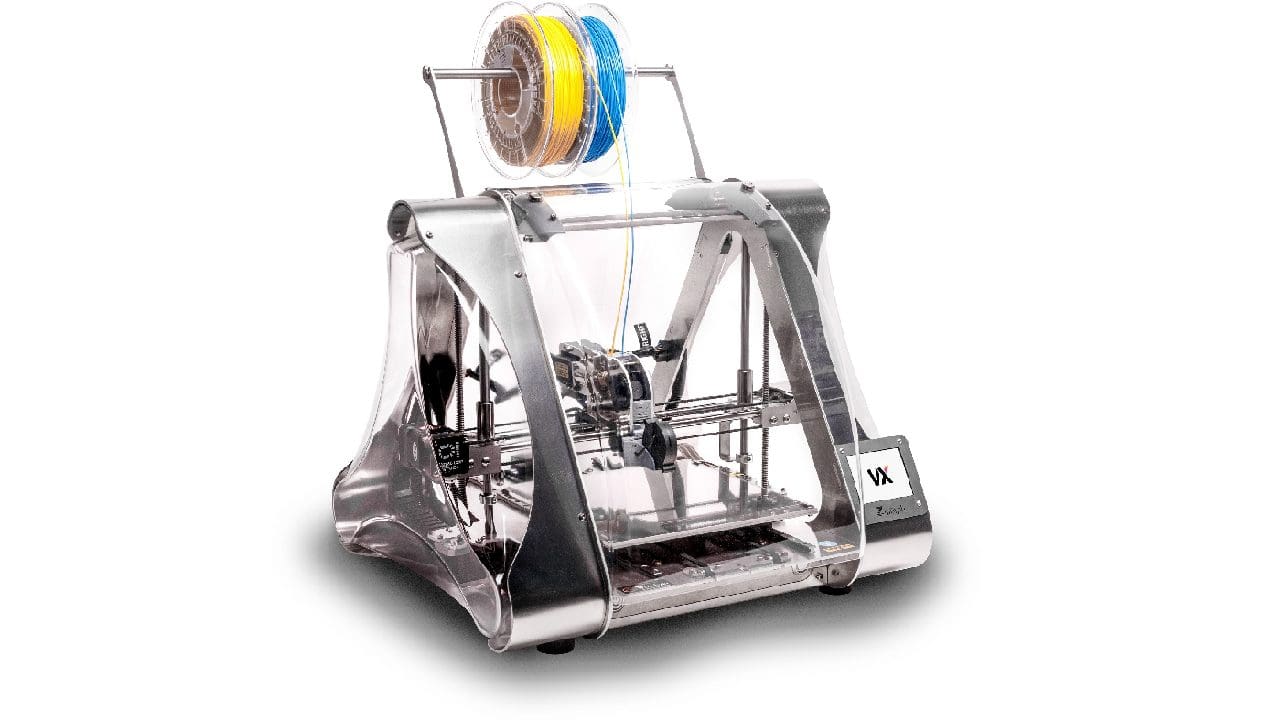All 3D printing filaments are hygroscopic which means that the material is good at absorbing water. Unfortunately, this negatively effects the quality of the prints that the filament makes, so it’s important to keep your filament dry. Annoyingly, this doesn’t just mean making sure that your filament doesn’t get rained on or washed with water, as it can even absorb moisture out of humid air.
It’s basically impossible to tell if a spool of filament is wet just by looking at it. Wet filament becomes a lot more obvious, however, when you try to print with it. The biggest give-away is if you can hear popping and cracking sounds when extruding. This happens because the print head is very hot, much hotter than the boiling point of water, so it boils the water off very quickly, causing it to bubble out of the molten filament. This tends to lead to wet filament prints having a fuzzy surface texture rather than the normal smooth surface as the steam bubbles escaping from the molten filament disrupt the surface.
Other effects of a wet filament are severely reduced part strength, reduced layer adhesion, uneven extrusion lines, and unusually severe stringing, blobbing, or oozing. If you experience any of those issues, then a wet filament may be to blame. Thankfully, it’s possible to dry wet filament and it’s possible to prevent your filament from getting wet in the first place.
How To Dry Wet Filament
To dry the wet filament, you need to heat it up, so the water slowly evaporates off. It’s possible to buy or make a specialised filament dryer. These involve some sort of chamber and heating element and can vary from being super basic to having extra features such as rotating spool mounts and/or fans to ensure even heating. It’s also possible to use an oven or a food dehydrator to dry filaments.
Note: It’s important to be careful not to heat the filament too much otherwise it can transition to a glass phase and fuse the entire spool together, ruining it. It’s important to research the appropriate temperatures for the material that you need to dry, and to then stay a little under that.
Tip: Specifically, when using an oven, be sure to pre-heat the oven before putting the filament in, as they typically overshoot the specified temperature a bit when heating up. It’s also a good idea to ensure that the temperature can be set accurately, as you may otherwise end up melting one or more spools of filament.
How To Safely Store Filament
You can buy dedicated filament storage devices; however, these tend to be somewhat expensive and generally only fit one or two spools at once. This can be fine if you don’t have much to store, but costly and bulky if you have a lot of filament spools to store. Drying cabinets are also available, they’re similar to wine coolers in size, and while they’re even more expensive, they can offer high-capacity storage.
It’s also possible to make your own safe storage solutions. Typically, this involves buying a airtight container, and then adding desiccants or even some form of heating element. Plastic tubs, pet food bins, and vacuum storage bags are all common and great storage options depending on your size, storage, and capacity needs.
In terms of desiccants, pretty much any should work. Desiccants in packets or pouches are easiest to use, reuse, and move around, but if you need a lot of drying power for large storage containers it may be easier to buy loose beads in bulk. Generally, it’s recommended that you use 1.2 ounces of desiccant for every cubic foot of storage capacity (1.2 grams per litre), but it never hurts to use more. Most desiccants can even be recharged when they become saturated by heating them up a bit. It’s also possible to combine the desiccant with a relatively low power heating element such as a reptile heating mat, though this obviously incurs running costs and requires both access to power where you plan to store your containers and effort to modify the airtight containers to allow the cables in, so may not be for everyone.


